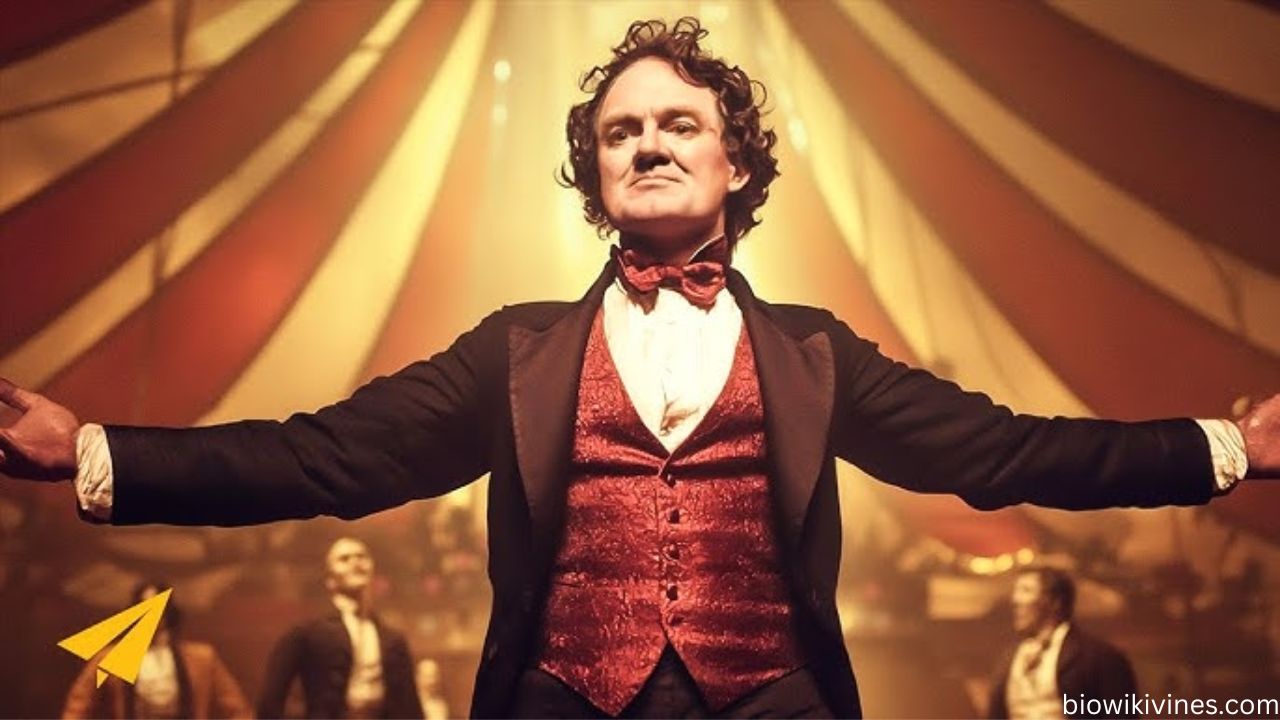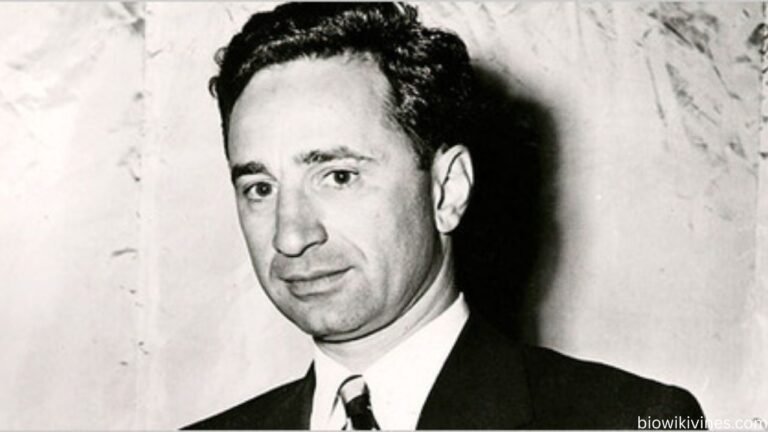P.T. Barnum: The Life, Legacy, and Lifestyle of the Greatest Showman
When you think about the word showman, one of the first names that comes to mind is P.T. Barnum. He was a man who knew how to grab attention and turn ordinary ideas into something extraordinary. Born in 1810 and living until 1891, Barnum became one of the most famous figures of his time. People either admired him for his creativity or criticized him for his tricks, but no one could ignore him.
Barnum built his career on bold choices. He created museums, ran shows, and later built one of the most famous circuses in the world, often called “The Greatest Show on Earth.” He had a way of making people curious, even if it meant using humbugs—clever hoaxes—to attract attention. Some found this dishonest, while others admired it as smart marketing.
Much like marc mezvinsky, who is often in the spotlight for his own background and connections, Barnum learned how to use attention to his advantage. He became a cultural figure who shaped entertainment for generations. Whether people loved him or disliked his methods, P.T. Barnum left a mark that is still remembered today. His story is one of creativity, controversy, and determination.
Who is P.T. Barnum?
Phineas Taylor Barnum, better known as P.T. Barnum, was an American entrepreneur, entertainer, and politician. He was born in Bethel, Connecticut, and grew up with a strong dislike for farm work. From a young age, he looked for ways to make money and entertain people. This drive shaped the man who later became famous worldwide.
Barnum was not just about fun and games. He was also a writer, a businessman, and even a public servant. He served in the Connecticut Legislature and worked as the mayor of Bridgeport, Connecticut. His influence went beyond circuses and museums; he also supported human rights causes later in life. This showed that while he loved entertainment, he also cared about social progress.
Much like how marc mezvinsky is often recognized for his mix of family background and personal achievements, P.T. Barnum blended his talents with opportunities around him. He turned everyday ideas into spectacles that fascinated people. Some called him a genius for this, while others accused him of being manipulative. Either way, P.T. Barnum became a household name that represented the power of imagination and showmanship.
Real Name and Ethnicity
P.T. Barnum’s real name was Phineas Taylor Barnum. Though most people know him as P.T. Barnum, his full name reflected his New England roots. Using his initials made his name easier to remember and brand, especially as he became more famous. He understood that presentation mattered, even down to how he introduced himself.
Also read: /sophia-bush-bio/
Barnum’s ethnicity was white Caucasian, and he grew up in a fairly modest American household in Connecticut. His background was not wealthy or powerful, which made his later success even more impressive. He built his fortune and name from the ground up, showing determination and cleverness. This part of his identity made him relatable to the working class, who were his main audience in the early days.
In a similar way, marc mezvinsky is often identified not only by his own career but also by the family and cultural background that shaped him. For Barnum, his ethnicity and upbringing gave him the perspective to connect with everyday people. He knew how to appeal to the curiosity and desires of the masses, and that’s a big reason he became such a strong figure in American entertainment history.
Mother, Father, and Sibling Information
P.T. Barnum was born into a modest family in Bethel, Connecticut. His father, Philo Barnum, worked as a tailor and sometimes as a storekeeper. His mother, Irena Taylor Barnum, was a homemaker who helped raise her children and manage the household. They lived a simple life, far from the fame that Barnum would later chase.
His parents were not wealthy, but they taught him values of hard work and creativity. Barnum often disliked farm labor, yet he admired the persistence his parents showed in keeping the family stable. His family background influenced his drive to escape ordinary routines and find something bigger. Barnum often said that his humble start made him stronger and more determined to succeed.
Much like how marc mezvinsky is often linked to the importance of family influence, Barnum’s early household shaped who he became. He grew up surrounded by siblings, though history remembers him most clearly as the child who stood out. His family may not have been famous, but they gave him the foundation from which he built his empire of entertainment.
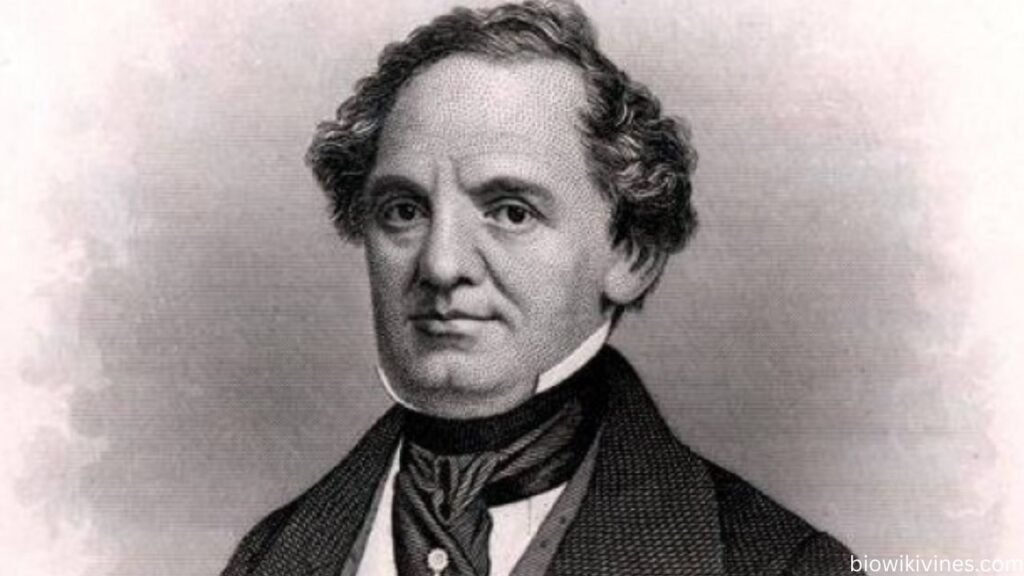
Girlfriend/ Wife
P.T. Barnum’s personal life was just as eventful as his public career. He first married Charity Hallett in 1829, and they remained together for many years. Charity was his partner through the ups and downs of his career, from his early struggles to his growing fame. Together, they had four daughters, and while Barnum was often away for business, he cared deeply for his family.
After Charity’s death in 1873, Barnum remarried two years later. His second wife was Nancy Fish, a much younger woman from England. This marriage was sometimes criticized due to their age difference, but Barnum valued companionship and support during his later years. Nancy was by his side until his death in 1891.
Like marc mezvinsky, whose marriage is often discussed in the media because of his connections, Barnum’s marriages drew public attention too. People were curious about the man who brought so much spectacle to the world and wanted to know more about his private life. Barnum’s relationships show that even great showmen needed love, stability, and family to balance their larger-than-life careers.
Age, Height, Weight, Date of Birth, and Figure
P.T. Barnum was born on July 5, 1810, in Bethel, Connecticut. He lived a long and full life until his death on April 7, 1891, at the age of 80 years old. His life spanned a fascinating period in American history, from the early 19th century through the Gilded Age, giving him opportunities to reinvent entertainment many times.
Barnum was a tall man for his era, standing at 6 feet 2 inches. He weighed around 69 kilograms (152 pounds). His figure and presence added to his ability to command attention. People often noticed his confident personality before anything else. Even in portraits, Barnum appeared proud, sharp, and always ready to impress.
Like marc mezvinsky, who is often described with details about his appearance and public image, Barnum’s physical traits were part of his identity. His tall height made him stand out in crowds, while his commanding presence gave him an aura of leadership. Combined with his clever mind, Barnum’s figure helped reinforce his role as “The Greatest Showman.”
| Name | P.T. Barnum |
| Date of birth | July 5, 1810 |
| Height | 6 feet 2 inches |
| Weight | 69 kilograms |
| Age | 80 years old |
Popularity and Its Reason
P.T. Barnum became popular because he knew how to capture people’s attention. In the 1800s, when entertainment options were limited, Barnum created shows that amazed and shocked audiences. He presented oddities like the Fiji Mermaid and promoted acts such as General Tom Thumb. Even when people knew some of his displays were exaggerated or fake, they still came because they enjoyed the spectacle.
His ability to market and promote was ahead of his time. Barnum understood that curiosity drove people, and he used posters, newspapers, and word of mouth to build hype around his shows. This skill made him not just an entertainer but a pioneer of modern advertising. His nickname, “The Greatest Showman,” came from his unmatched ability to turn anything into a must-see event.
Much like marc mezvinsky, who gains attention for his background and personal story, Barnum knew the power of keeping people curious. His popularity wasn’t only about what he showed on stage, but also about the mystery he created around himself. He became a symbol of fun, surprise, and wonder, which is why his name is still remembered even today.
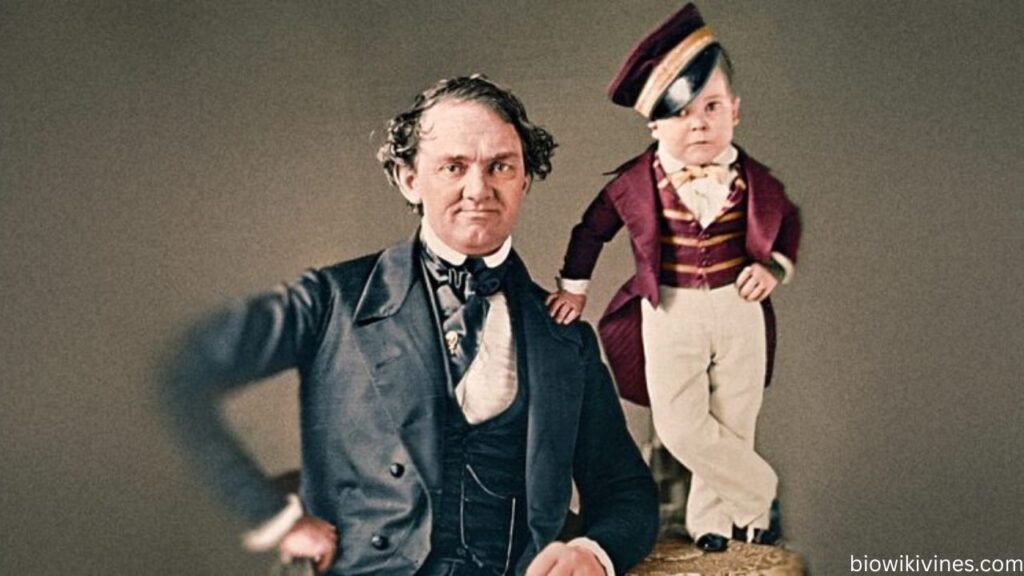
Career
Barnum’s career started with small ventures, like running a newspaper and trying out different businesses. But his true calling came when he entered the world of show business. His first big act was Joyce Heth, an elderly enslaved woman whom he claimed was over 160 years old and once George Washington’s nurse. While controversial, it drew massive crowds and started his path to fame.
In 1842, he bought Scudder’s American Museum in New York and transformed it into Barnum’s American Museum. It displayed animals, curiosities, and live performers. This museum became a central attraction for decades until it burned down. Later, Barnum partnered with James A. Bailey to create a traveling circus, famously branded as “The Greatest Show on Earth.” This circus was a blend of exotic animals, clowns, and extraordinary acts, leaving audiences in awe.
Like marc mezvinsky, who built a career through a mix of skill and public attention, Barnum turned every challenge into a chance to grow. Even after financial losses and setbacks like fires, he reinvented himself and came back stronger. His career showed that resilience and creativity could make someone unforgettable.
Net Worth
At the height of his success, P.T. Barnum’s net worth was estimated to be about $1 million, which was a massive fortune during the 1800s. His wealth came from multiple sources—his museum, circus, investments, and clever promotions. He had the unique ability to turn even small ideas into profitable ventures by making them entertaining to the public.
However, Barnum’s finances were not always stable. He faced bankruptcy after risky investments but managed to recover by returning to what he did best: entertaining people. This comeback showed his determination and business skills. He knew how to adapt and rebuild his empire, which helped him secure his wealth again.
Like marc mezvinsky, whose financial profile often draws public interest, Barnum’s money was always a subject of discussion. People were fascinated not only by his shows but also by how he built such fortune out of imagination and daring moves. By the time of his death, Barnum was not just wealthy in money but also in reputation, leaving behind a legacy worth more than numbers.
Nationality and Religion
P.T. Barnum was proudly American, born and raised in Bethel, Connecticut. His nationality played a huge role in shaping his journey. The United States during the 1800s was a place of rapid growth, change, and opportunity, and Barnum used this to his advantage. He tapped into the curiosity and adventurous spirit of the American people, giving them the kind of entertainment they craved.
When it came to faith, Barnum was a Christian. His religion was an important part of his personal life, especially in his later years. He supported various churches and charitable causes, showing that his beliefs influenced more than just his personal choices. His faith gave him a moral compass, even though his work often stirred controversy.
Much like marc mezvinsky, who is often recognized for balancing personal faith and public life, Barnum also found a way to combine his personal identity with his career. His nationality gave him opportunities, while his religion grounded him. Together, these elements created a balance that helped Barnum leave a legacy not only as a showman but also as someone who cared about community and values.
| Religion | Christian |
| Ethnicity | Caucasian |
| Net worth | $1 million |
Next Steps and Goals
Even though P.T. Barnum achieved massive success, he never stopped setting new goals. He believed that growth was a lifelong journey. In his later years, he wanted to use his fame and fortune for more than just shows. He focused on politics, philanthropy, and social issues. Serving as the mayor of Bridgeport, Connecticut, was one of the ways he tried to give back.
Barnum also supported the abolition of slavery and became involved in movements that promoted human rights. This shift from show business to politics showed that he was not just about money or fame—he wanted to make a real difference in society. He also supported animal rights and charities, proving that his goals extended beyond himself.
Like marc mezvinsky, who is often admired for balancing career ambition with personal values, Barnum wanted his legacy to be more than entertainment. His next steps were about creating impact, improving communities, and leaving something meaningful behind. These goals remind us that even great showmen have deeper missions in life.
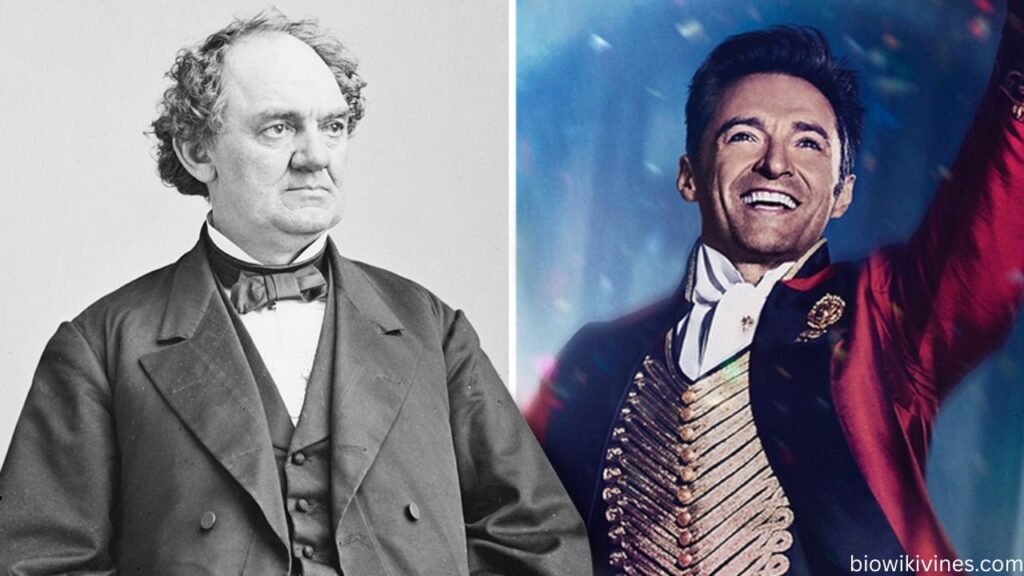
Hobbies
Behind the curtain, P.T. Barnum had a life filled with personal interests. His hobbies reflected his curiosity and energy. Barnum enjoyed exploring new ideas and always looked for ways to expand his mind. While his career took much of his time, he still found joy in simple activities.
Here are some of Barnum’s known hobbies and interests:
- Reading – He loved books and often read to gather ideas and inspiration.
- Writing – Barnum wrote several books, including autobiographies that shared his story.
- Traveling – He enjoyed seeing new places, especially while promoting his shows.
- Philanthropy – Giving back became a passion later in life.
- Collecting curiosities – Barnum loved finding unique and odd items to study and share.
- Community service – He often supported local projects in Bridgeport.
Much like marc mezvinsky, who finds balance between work and personal life, Barnum’s hobbies kept him grounded. They gave him time to recharge and stay connected to the world outside of entertainment. His hobbies weren’t just pastimes—they were also ways to feed his imagination and sense of wonder.
Interesting Facts About P.T. Barnum
Beyond his famous circus and museums, P.T. Barnum lived a life full of surprises. He was not just a showman but also a thinker, writer, and community leader. People often remember him for his daring stunts, but there are many fun details about his life that add more color to his story.
Here are some interesting facts about Barnum:
- He was once bankrupt but rebuilt his fortune through creativity.
- He helped bring the famous opera singer Jenny Lind to America, calling her “The Swedish Nightingale.”
- He was the mayor of Bridgeport, Connecticut, and worked on improving the city’s water supply.
- Barnum loved animals and supported the early ASPCA.
- His famous line, “The noblest art is that of making others happy,” still inspires people today.
- He wrote books about his own life, making him one of the first celebrity autobiographers.
- His circus later merged with others to form the Ringling Bros. and Barnum & Bailey Circus.
Much like marc mezvinsky, whose life details often fascinate the public, Barnum’s story is filled with little-known facts that reveal his depth. These details remind us that behind every great public figure is a person with unique passions and quirks.
FAQs
Q1: What was P.T. Barnum’s real name?
A: His real name was Phineas Taylor Barnum.
Q2: When was P.T. Barnum born?
A: He was born on July 5, 1810, in Bethel, Connecticut.
Q3: What was P.T. Barnum’s net worth?
A: At his peak, his net worth was about $1 million, a huge sum for his time.
Q4: Was P.T. Barnum married?
A: Yes, he married Charity Hallett first, and later Nancy Fish after Charity’s death.
Q5: How tall was P.T. Barnum?
A: He stood 6 feet 2 inches tall.
Q6: What religion did P.T. Barnum follow?
A: He was a Christian.
Q7: Why is P.T. Barnum famous?
A: He was known for his museum, circus, and promotion of curiosities.
Q8: How is marc mezvinsky connected in style to Barnum?
A: Like Barnum, marc mezvinsky attracts public attention because of his background, values, and ability to balance personal life with a public role.
Conclusion
The story of P.T. Barnum is one of ambition, creativity, and resilience. From a boy in Bethel, Connecticut, to becoming the “Greatest Showman,” he built a legacy that shaped the world of entertainment. His circus and museum were more than just businesses—they were experiences that sparked joy and wonder in millions of people.
Barnum’s life was not without flaws. He faced criticism for his use of hoaxes and how he presented people in his shows. Yet, he also evolved, supporting human rights and giving back to his community. This complexity makes him both controversial and admirable. His life teaches us about the power of reinvention and the importance of leaving a mark.
Much like marc mezvinsky, who is recognized for balancing public attention with personal purpose, Barnum managed to blend fame with values. He wasn’t just an entertainer; he was also a leader, philanthropist, and visionary. His words, “The noblest art is that of making others happy,” remain a timeless reminder of what he stood for. P.T. Barnum may be gone, but his influence continues to inspire the world.

